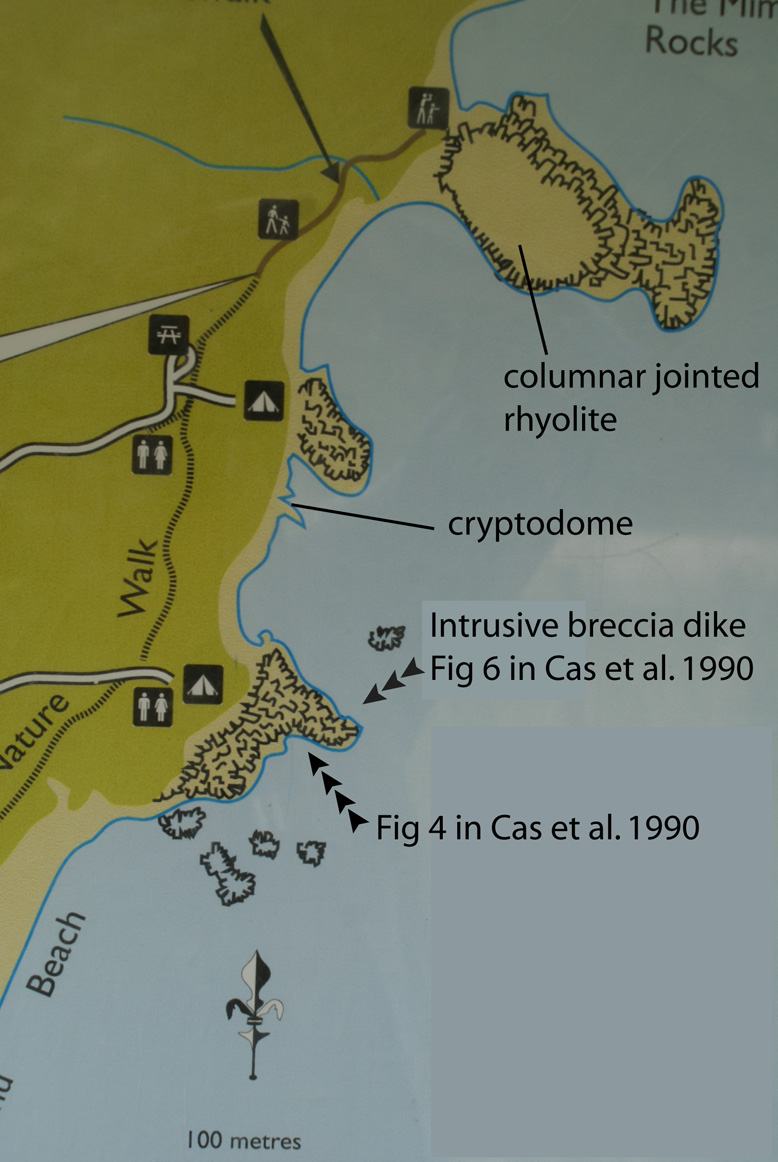Rhyolite-Basalt-Soft Sediment Relationships at Bunga Beds, Aragunnu, Mimosa Rocks, Southern NSW, Australia
|
Rhyolite-Basalt-Soft Sediment Relationships at Bunga Beds, Aragunnu, Mimosa Rocks, Southern NSW, Australia
|

|
| Figure 1a) Map indicating key localities referred to on the text. |
|
|
|
| Figure 2a) Hexagonal pattern of columnar jointing. This dominates the northern part of the map in Fig. 1 above. | Figure 2b) Columns. |